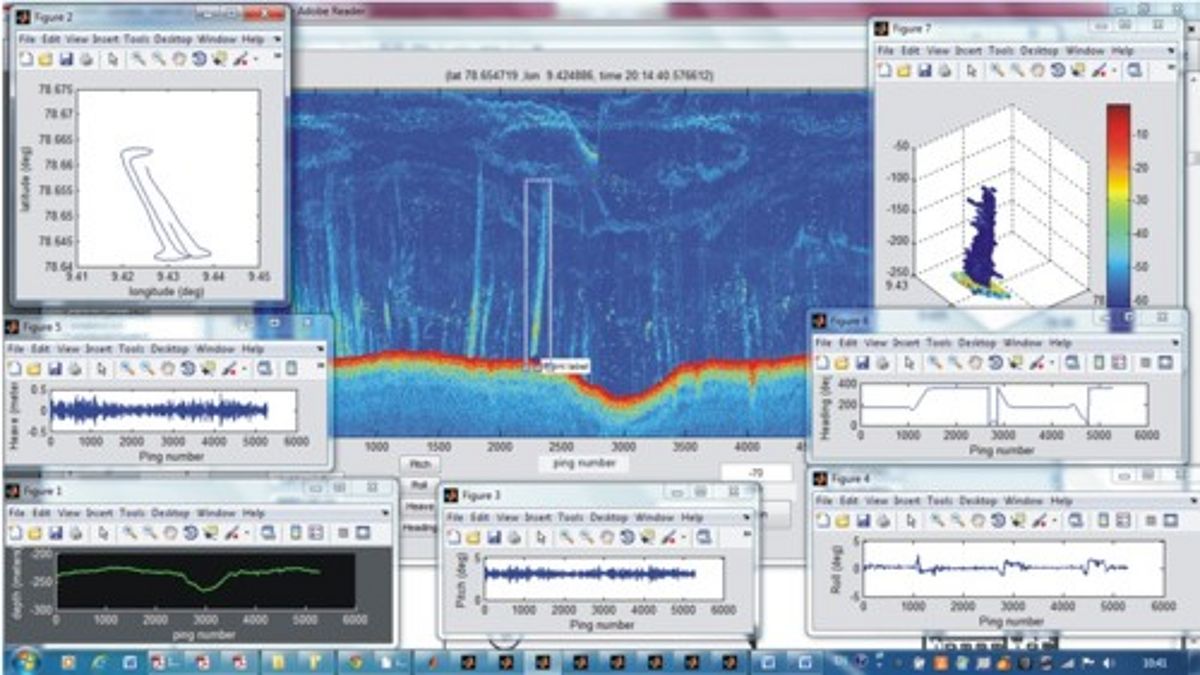DSM Work Methods
Hydroacoustic detection, quantification and monitoring of free gas release
During the last years, we have developed and advanced a method for using singlebeam echosounder systems (SBES) for gas flux quantifications (in review at L&O-Methods software). Peter Urban is currently developing filter methods for water column imaging data of multibeam echosounder data (MBES) for better flare detection and the merging of data from different survey lines. It is also part of Peter's PhD thesis work to develop GasQuant II, improving the old GasQuant system that was developed by Jens Greinert in 2001. In its current configuration GasQuant II uses an Imagenex MBES that is implemented into a lander-based system operating completely autonomously. The system is ROV- and cable-deployable down to 3000 m water depth.
Counting and measuring bubbles
Size, number, rising speed and release frequency of bubbles are essential parameters for direct flux measurements of free gas release at the seafloor and the dissolution behaviour of gas bubbles in the water column. Such parameters are needed as input for our hydroacoustic flux estimates and calculations for methane transport towards the sea surface. The group is involved in developing the camera optics and light for the ‘Bubble Box’ in cooperation with Jens Schneider v. Deimling of FB4. The light for the back-illuminated box has been adapted from the new AUV camera flash. Two B&W cameras oriented 90° toward each other will take videos with a 100Hz frame rate. The light will ‘flash’ synchronously to save energy when the box is being deployed by ROVs. Automated video analyses will be used to count and measure bubble sizes.
Camera Calibration
Modern photogrammetric methods like image mosaicking or 3D reconstruction allow to use images taken by optical cameras to accurately measure distances or volumes of objects in a scene of interest. In order to archive robust results, it is important to calibrate the geometric properties of the camera used. Technically, the corresponding 3D ray in space is determined for each pixel in the image. The DeepSea Monitoring group is interested in developing and experimenting with methods for refractive, underwater camera calibration. These approaches explicitly model light refraction at the underwater housing port, which is important for avoiding a systematic, geometric modeling error in later measurements. Based on such a calibration, it is possible to apply methods like refractive 3D reconstruction to images captured at the seafloor and compute a virtual, digital 3D model of the scene, that can be viewed interactively.
Image Annotation Data Base
The group is using, advancing and operating the image annotation
software BIIGLE that is being developed by the Biodata Mining Group at Bielefeld University. BIIGLE is a web-based GUI application for annotating images of any kind with different tools in a GUI framework. Image annotation is an important topic for visual monitoring to make information from images available for/via GIS-based processing. BIIGLE can be run on research vessels for at-sea data analysis and interpretation.
Software Development
Fortunately the group has some capacity for developing software code, ranging from old fashioned VB6 (->OFOP), Python, C-sharp, C++ to MATLAB. The philosophy of the group is to develop ‘user friendly’ software that helps e.g. to browse quickly through data recorded by voltammetry devices, or to quantify free gas fluxes (FlareHunter), that drives the new camera system of the AUV Abyss or makes camera calibration easier. Software in most cases can be downloaded for free, but we would like to keep track of who is using it, thus contact details are required.



